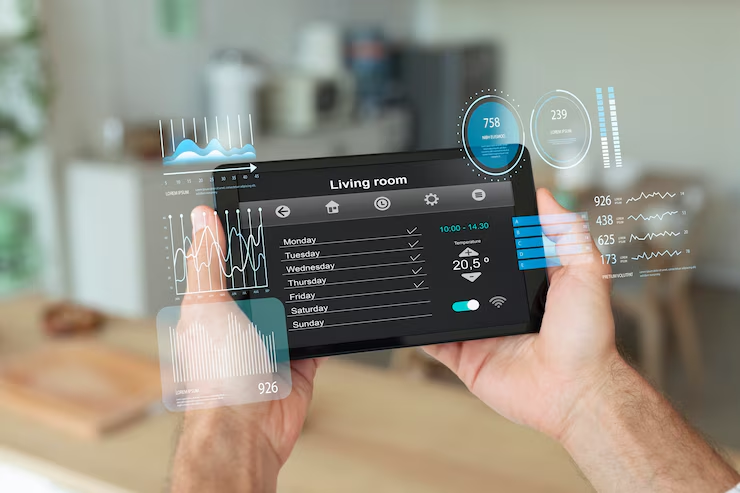From Sensors to Strategy – Turning IoT Data into Actionable Manufacturing Intelligence. Last month, I walked through a manufacturing plant in Pune that looked nothing like the noisy, chaotic factories I remembered from my engineering college days. This one was almost eerily quiet, with screens displaying colorful dashboards at every workstation. When a particular machine began operating slightly differently than usual, it wasn’t a human who noticed it was another machine. The plant manager smiled at my amazement: “Our sensors caught a 0.3% variation in vibration patterns. We’ll replace that bearing next week, long before it fails.”
The Silent Revolution on Factory Floors
We’ve all heard that data is the new oil in Industry 4.0, but that analogy only goes so far. Unlike oil, data isn’t valuable simply because you’ve extracted it. A factory generating terabytes of sensor data might as well be gathering digital dust unless that information becomes actionable intelligence.
This is the true revolution happening in manufacturing today. Billions of IoT sensors are now embedded in everything from massive assembly lines to individual worker safety helmets, creating a constant stream of information. But the real magic happens in transforming those endless data points into decisions that boost productivity, cut costs, and drive innovation.
The Connected Manufacturing Ecosystem
During a recent conversation with the CTO of a major automotive parts manufacturer in Chennai, she described their journey: “Five years ago, we had machines. Today, we have machines that talk to each other and tell us their life stories.”
The Industrial Internet of Things (IIoT) has fundamentally changed the relationship between humans and machines. Modern factories now operate with:
Smart sensors monitoring temperature, vibration, humidity, pressure, and dozens of other variables Edge computing devices processing critical data instantaneously Cloud platforms aggregating information across entire production ecosystems AI algorithms detecting patterns too subtle for human observation
According to recent projections, the global IIoT market will surge beyond $110 billion by 2028. In India alone, manufacturing giants like Tata Steel, Mahindra & Mahindra, and Bharat Forge are making significant investments in these technologies not as futuristic experiments, but as core business infrastructure.
From Raw Data to Strategic Action: The Intelligence Journey
The path from sensor readings to strategic decisions follows a clear progression that I’ve seen transform operations across multiple Indian manufacturing sectors:
- Data Collection: The journey begins with sensors embedded throughout the operation. At a textile facility in Tirupur, over 1,000 sensors continuously monitor everything from thread tension to ambient humidity generating 2TB of data daily.
- Data Integration: Raw readings flow into centralized platforms that normalize and contextualize information. A pharmaceutical manufacturer in Hyderabad described this challenge perfectly: “Getting data is easy. Getting it in a format where our MES and ERP systems can talk to each other was the hard part.”
- Advanced Analysis: This is where investment really pays off. AI and machine learning algorithms sift through mountains of data to identify patterns humans would never notice. One automotive supplier uses algorithms that correlate seemingly unrelated factors ambient temperature, material batch numbers, and operator shift patterns to predict quality issues before they occur.
- Visualization: Technical insights become accessible through intuitive dashboards and real-time alerts. At a pump manufacturing facility in Coimbatore, operators now glance at color-coded displays that instantly communicate machine health without requiring data science expertise.
- Action and Strategy: The final transformation from insight to impact. A steel manufacturer in Jamshedpur adjusted their cooling processes based on sensor data analytics, reducing energy consumption by 10% while improving output quality.
Real-World Success Stories
The transformation is happening right now across India’s manufacturing landscape:
An electronics assembly plant in Noida implemented IoT sensors throughout their production line, reducing quality defects by 27% in just six months by identifying and addressing process variations in real-time.
A heavy machinery manufacturer in Pune equipped their service technicians with augmented reality headsets that display IoT-derived equipment health data, cutting maintenance time by 35%.
A medium-sized auto parts supplier in Gurugram installed affordable retrofitted sensors on legacy equipment, enabling predictive maintenance that has virtually eliminated unplanned downtime.
The Challenges of Transformation
Despite the compelling benefits, manufacturers face significant hurdles in their data transformation journeys:
Legacy equipment not designed for connectivity requires creative retrofitting solutions Data silos create information islands that prevent holistic analysis Skills gaps mean many companies collect data they lack the expertise to interpret Implementation costs can be substantial, especially for smaller manufacturers
Yet innovative approaches are emerging to address these challenges. Edge computing devices process critical data locally, reducing bandwidth needs. Cloud-based analytics platforms offer subscription models that lower entry barriers. And a growing ecosystem of specialized consultants helps bridge the expertise gap.
Conclusion: The Intelligence Imperative
As we stand at this pivotal moment in manufacturing evolution, one thing is increasingly clear: collecting data is just the beginning. The true competitive advantage comes from building an intelligence ecosystem that transforms billions of data points into actionable insights.
For manufacturers wondering where to start, my advice is simple: begin with a single high-impact process. Install sensors, analyze the data, and act on the insights. The initial results will build confidence and momentum for broader transformation.
The factories that will thrive in the coming decade won’t necessarily be those with the most robots or the newest equipment they’ll be the ones that master the art and science of converting sensor data into strategic intelligence. In a world where margins are tight and competition is global, this intelligence isn’t just a technological advantage it’s the difference between leading the market and being left behind.
The future of manufacturing belongs to those who can hear what their machines are telling them and have the wisdom to listen and act.

